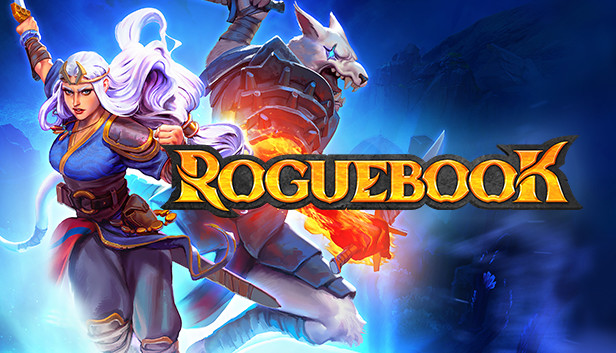 Over the past five years, I have spent a lot gaming time battling against various foes with the most powerful weapon available: cards. Faeria and Slay the Spire have been two of my favorite card-based battle games. These worlds collide with Roguebook. To be precise, Abrakam, a developer, has brought his Faeria universe to the roguelike deck-builder genre, and created a storybook version of Slay the Spire. Although Roguebook isn’t quite as exciting in gameplay as Slay the Spire, it still has plenty to offer. From its brilliant dual hero battle system, gorgeous presentation, and puzzle-like overworlds built around the idea that you are trapped within Faeria’s lore, to its puzzle-like worlds.
Over the past five years, I have spent a lot gaming time battling against various foes with the most powerful weapon available: cards. Faeria and Slay the Spire have been two of my favorite card-based battle games. These worlds collide with Roguebook. To be precise, Abrakam, a developer, has brought his Faeria universe to the roguelike deck-builder genre, and created a storybook version of Slay the Spire. Although Roguebook isn’t quite as exciting in gameplay as Slay the Spire, it still has plenty to offer. From its brilliant dual hero battle system, gorgeous presentation, and puzzle-like overworlds built around the idea that you are trapped within Faeria’s lore, to its puzzle-like worlds.
Roguebook’s overworld exploration is one of its most distinctive points. Each map begins with large areas of blank parchment. It’s only through the use of brushes and inkpots that you can reveal what each tile contains. You’ll find opportunities to draw more cards, transmute cards and build your in-battle energy reserve as you paint. There will be gold in every chapter shop. You’ll also find relics that could power up your gameplan. Additionally, you’ll come across standalone events and mythical creatures. It’s a fascinating layer of overworld strategy that involves learning how to gather and use ink the best way.
Every enemy encounter is a chance to test your cards, abilities and modifiers. Is your strategy working together? Are you making the most of the two heroes that you chose at the beginning of the run, or are you ignoring them? Are you able to deal with multiple foes and work around status effects? Do you have the lethality to defeat enemies who steadily increase their power? It’s important to remember all of this, especially with the increasing number of talents and relics at the top. These perks are fundamentally what will influence your decision on which cards you draft and how to approach any given fight. Continue reading “Roguebook Video Game Review”
 How To acquire A Video Game Tester Job is among the most talked about things on the internet, with the majority of people believing it could be their dream job. Also since there are far more video games and games games before so there’s more need for your video game tester.
How To acquire A Video Game Tester Job is among the most talked about things on the internet, with the majority of people believing it could be their dream job. Also since there are far more video games and games games before so there’s more need for your video game tester. Websites Are regarded as casual platforms by lots of folks to share data and speak with one another. Many search engines will crawl sites considerably faster than sites. Because of this, websites will stand a much better chance of ranking well in search success. Therefore, anything which goes on the site will rank well. Whether this website is related to the site, then the website will even rank well. Due to this attributes, websites are becoming increasingly more popular among web site owners in the search engine optimization perspective.
Websites Are regarded as casual platforms by lots of folks to share data and speak with one another. Many search engines will crawl sites considerably faster than sites. Because of this, websites will stand a much better chance of ranking well in search success. Therefore, anything which goes on the site will rank well. Whether this website is related to the site, then the website will even rank well. Due to this attributes, websites are becoming increasingly more popular among web site owners in the search engine optimization perspective.